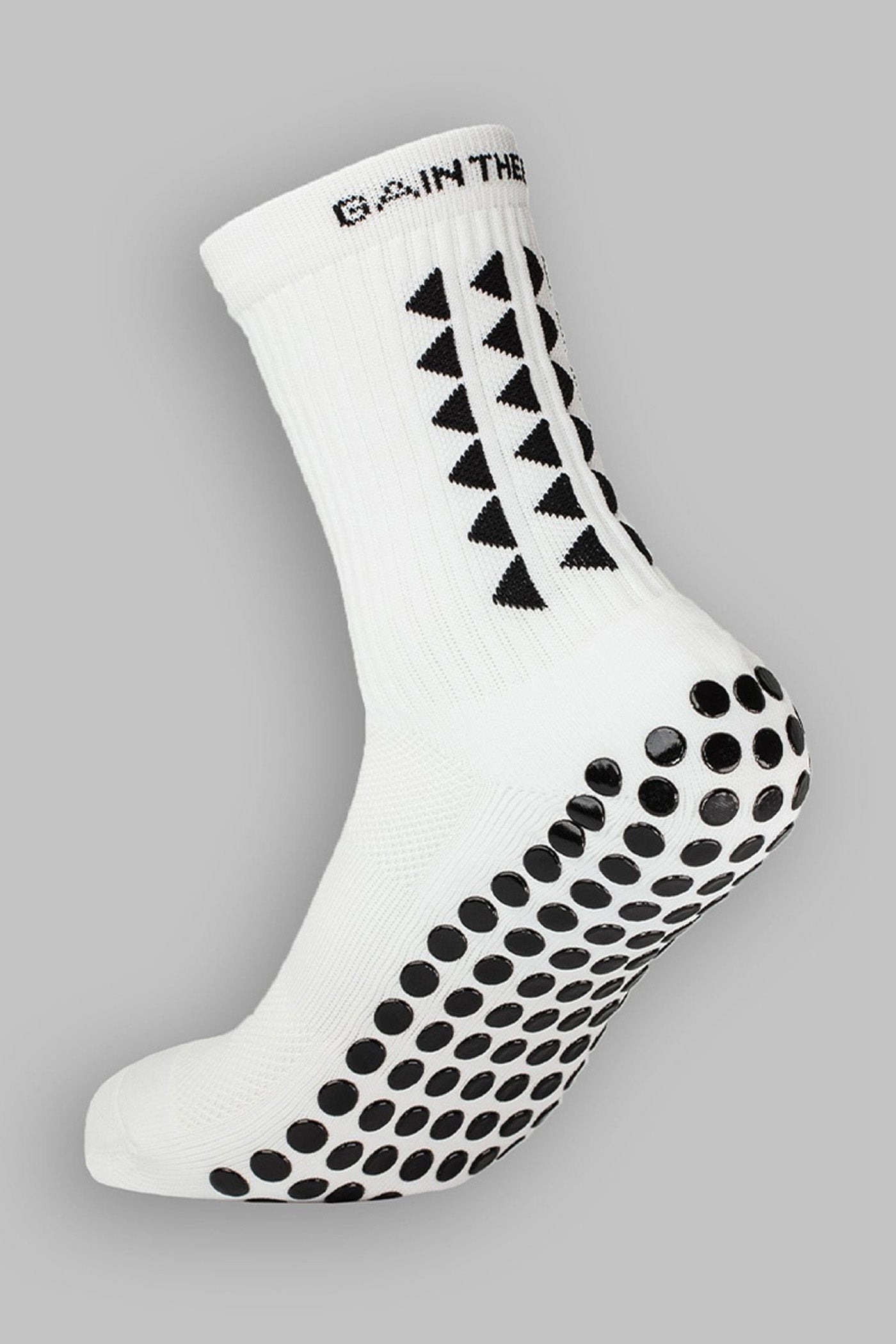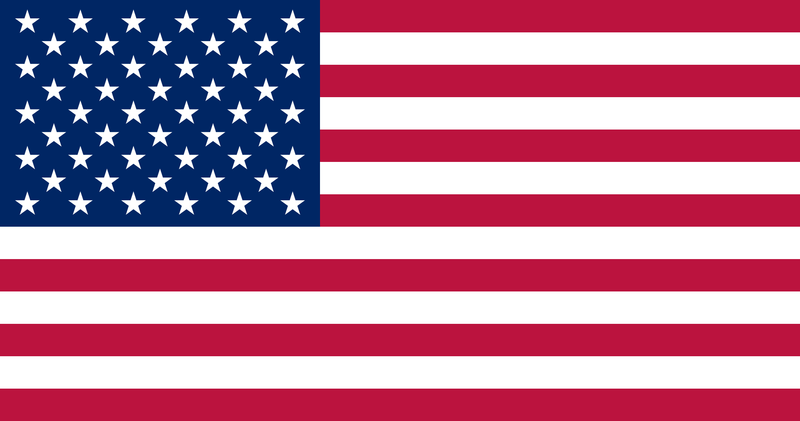Compression socks are fast becoming a must-have accessory among athletes and for a good reason. So why use compression socks?
This simple addition to your gear can improve blood flow, enhance performance and boost recovery.
But not all compression socks are created equal, nor do they all serve the same purpose. Some are used during exercise; some are suitable to wear for long periods during your recovery, while others are only suitable for medical purposes such as varicose veins or post-surgery recovery.
Socks differ in how much compression they offer, their cushioning and breathability, and the fabrics they are made of.
Compression socks may benefit you whether you are a dedicated endurance runner, professional athlete, or gym enthusiast.
This article gives guidelines on choosing the best compression socks for your needs.
What this article covers:
- Best Compression Socks for Runners and Other Athletes
- Best Compression Socks: Buyer's Guide
- Benefits of Compression Socks for Athletes
- Best Compression Socks (FAQs)
Best Compression Socks For Runners And Other Athletes
Gain The Edge Compression Grip Sock V1
The Gain The Edge compression grip sock V1 is specially designed to help improve traction and grip on various surfaces while providing the benefits of traditional compression socks.
Our socks are made from premium cotton with elastic fibers to provide optimal compression to athletes' and fitness enthusiasts' ankle and calf areas.
Weighing in at 45 grams a sock, the thickness and quality of the material eliminate the need for athletes to double sock. Whether you use double socks to provide additional cushioning or to improve the fit of your cleats, there is no need to double up when you wear our compression grip socks.
The thickness of the sock provides outstanding cushioning and protection for your feet. The compression of the elastic fibers ensures a snug fit that molds to the shape of your foot.
The graduated compression of the sock helps promote blood flow and reduce swelling, which is beneficial if you’re an athlete who spends a lot of time on your feet or experiences muscle soreness or fatigue.
At a glance, our grips may look similar to several other brands but look closely. We have used many smaller silicone grips that cover a large surface area. This means more stability. Plus, our grips extend up the heel of the sock, which further helps keep your foot in place.
Gain The Edge compression grip socks come in two sizes. Small: 36-41 EU (3-7 UK) Large: 42-47+ EU (8-12+ UK) The high degree of elasticity in our socks readily stretches to conform to foot shapes and sizes within your size range.
Why Our Compression Grip Socks are Great
- Reduced Muscle Pain: Improved blood flow means better delivery of oxygen and nutrients to the muscles, reducing the chances of cramping.
- Prevents injuries: Compression socks help reduce muscle oscillation and vibration during exercise. This is particularly beneficial for high-impact sports like running and jumping. Reduced muscle oscillation potentially prevents muscle injury.
- Accelerated muscle recovery: The increased blood flow created by compression socks can help reduce the build-up of lactic acid and other metabolic waste products that contribute to muscle soreness and fatigue.
- Optimized blood circulation: Compression socks provide graduated compression from the ankle up, increasing venous return to the heart and preventing blood pooling in the legs.
Compression socks are a great tool for athletes in various sports, including running, cycling, basketball, soccer, tennis, and more.
Compression sock use may also help prevent or reduce muscle damage and soreness, which speeds up post-event recovery time.
Who They Are Right For
- Runners: Compression socks are popular among runners as they may improve circulation and enhance performance. They may also reduce muscle soreness and fatigue during and after runs.
- Cyclists: Compression socks may help improve blood flow and reduce leg and foot swelling during long bike rides. They may also reduce the risk of cramping and fatigue.
- Soccer Players: Compression socks can help improve blood flow in the lower legs during games and practices. This reduces the risk of muscle injury and speeds up recovery time.
- Basketball players: Compression socks assist in stabilizing your muscles during vigorous movements and landings, which lessens impact-related muscle soreness and guards against sprains and tears.
- Tennis Players: Tennis players are at risk of ankle injury because of the running and jumping involved in the sport. Compression socks provide support to the lower leg and improve proprioception which is beneficial for quick changes in direction.
Overall, Gain The Edge V1 Compression socks are great for any athlete who wants to improve performance and post-exercise recovery. Our compression socks are designed to be comfortable to wear and provide cushioning and support to the feet, which can improve overall comfort during exercise.
Suppose it’s extra traction you are looking for. In that case, our dark blue grip socks prevent your feet from sliding in your footwear and improve stability when you change direction.
Best Compression Socks: Buyer's Guide
If you’re looking at buying your first pair of compression socks, there are several important factors that you must consider.
Sock Design
There are several forms of compression socks, each with benefits and features. Designs include ankle socks, knee-high socks, and whole-leg compression socks. Your design depends on your preference and what works best for your activity.
- Knee-high compression socks extend to just below the knee and provide compression to the entire lower leg. Knee-high socks are typically used to recover after exercise or reduce leg swelling.
- Thigh-high compression socks extend up to the top of the thigh, providing compression for the entire leg. Thigh-high socks are more commonly used for medical purposes.
- Calf compression sleeves are shorter than knee-high socks and cover the lower leg. Compression sleeves are popular among athletes to help improve blood circulation during exercise. The main difference between compression socks and sleeves is that calf compression sleeves are designed to imitate the leg taping used to prevent shin splints.
- Ankle compression socks provide compression to the foot and ankle. They can help increase circulation and reduce swelling in the feet.
- Open-toe compression socks are either knee-high or thigh-highsocks with open toes. They are suitable for people with sensitive or injured toes.
- Specialty compression socks are available on prescription only. They are designed to meet the particular needs of populations such as people with diabetes, lymphedema, or pregnant women.
Type of Fabric
Compression socks are typically made of synthetic and natural fibers, including nylon, spandex, polyester, and cotton. These materials, produced in different combinations and thicknesses, provide the necessary stretch and support for the socks.
Nylon and spandex are the most commonly used materials in compression socks.
Nylon is lightweight, breathable, and moisture-wicking. It is also resistant to piling and shrinking, which helps sock retain their compression level and shape over time.
Spandex is a stretchy, lightweight fabric that adds support and compression when combined with other materials. Its breathability makes it comfortable to wear for extended periods.
When choosing compression socks, it is vital to consider factors such as breathability, moisture-wicking properties, durability, and comfort. While several fibers can make effective compression socks, you cannot beat the breathability and comfort of cotton.
Gain The Edge compression grip socks’ blend of cotton and elastic fibers ensures effective compression while offering maximum comfort.
A wide variety of materials are used to make compression socks, and it’s essential to check the material content before you buy to avoid potential allergic reactions.
Compression Level
Compression socks are made according to different levels of compression. They are divided into classes under two main classifications; Afnor (Association Française de Normalisation) and RAL (European Union classifications).
Compression socks are made with graduating levels of compression. Compression is highest at the ankle, the higher number of the range, and decreases in pressure as it moves up the leg.
Compression sock levels are divided into four compression classes. Class 1 is light compression, and class 4 is firm compression. The pressure is also known as resting pressure and may be given in mmHg (millimeters of mercury) or kPa (kilopascal).
Below is an outline of the level of compression.
- Class 1: 10-15 mmHg - available over the counter. Suitable for daily wear, travel, and sports. Best for dull aching legs, They help improve circulation without being too tight.
- Class 2: 15-20 mmHg Great for sports recovery, daily wear, medical recovery, and managing mild symptoms of varicose and spider veins.
- Class 3: 20-36 mmHg used in the treatment of lymphedema.
- Class 4: 36+ mmHg leg ulcers and serious venous stasis
It is essential to be aware that there are inconsistencies between manufacturers. The pressure of the sock can vary depending on the stocking material, movements, and activities of the wearer, and the size of the wearer’s legs.
Sizing
Wear the correct size of compression socks to ensure they provide the right amount of compression and support. If you are unsure what compression sock sizes to wear, consult a health professional such as a physical therapist. They will show you how to wear compression socks and ensure the correct fit.
Follow these steps to find your size:
- Measure your ankle circumference around the narrowest part of your ankle, just above your ankle bone.
- Measure your calf circumference at the widest part of your calf.
- Measure knee length from just below the back bend of the knee to the floor behind your heel.
- Using the measurements that you took, check the manufacturer's sizing chart. Different brands may have slightly different sizing, so make sure you refer to the chart corresponding to the brand of compression sock that you are interested in.
- Select a size based on your measurements. If your measurements fall between two sizes, it is preferable to choose the larger size.
Compression socks should fit firmly around your legs and feet but not restrict movement. There are several ways to know if compression socks are too tight, including numbness or tingling in your legs and feet, discomfort or pain in your legs, and swelling due to restricted blood flow.

Poor-fitting compression socks can also cause redness and skin irritation. But, irritated skin can also occur if you wear compression socks too long.
If you are unsure of how to put on a compression sock, then we’ve got you covered with our helpful article on the topic.
Benefits of Compression Socks for Athletes
Athletes use compression socks for several reasons, including:
- Improve blood flow: Compression socks apply pressure to the veins in the lower leg. By reducing the vein diameter, blood flows back to the heart more efficiently. Improved circulation can help performance by delaying muscle fatigue.
- Reduce muscle fatigue: The pressure from the compression sock reduces muscle vibration during exercise. Muscles tire less quickly, which improves athletic endurance.
- Reduce swelling: During intense exercise, fluid can accumulate in the legs causing swelling and discomfort. Pressure from the compression socks enhances lymphatic system function and encourages the fluid back into the bloodstream.
- Injury prevention: Compression socks help to stabilize the muscles and joints, reducing the risk of injuries such as shin splints and strains.
- Recovery: Compression socks increase blood flow and reduce swelling, speeding up muscle healing and reducing post-muscle soreness.
When you wear compression socks and how long you keep compression socks on will depend on your individual needs. To further increase stability, consider compression socks with grips. Our red socks with grips, for example, stop your foot sliding in your shoe and reduce the risk of ankle and knee injury.
Compression Socks For Runners
Unless you have been diagnosed with a condition that requires specialty compression socks, we recommend knee-high socks with a pressure level of between 20-30 mmHg for runners.
This pressure level is rated as firm but will not restrict circulation or movement.
Over-the-calf socks with gradient compression promote blood flow through the ankle and up the leg, preventing ankle swelling.
Choose a breathable, moisture-wicking fabric designed to pull water away from the skin and evaporate through the sock.
Compression Socks for Cyclists
Overall, compression socks can be helpful for cyclists to improve their performance, reduce their risk of injury, and speed up their recovery time.
Knee-high compression socks provide support and compression to the calf muscles, lower leg, and foot. This is helpful for cyclists who experience cramping and calf muscles fatigue during long rides.
Knee-high compression socks also protect against scrapes and cuts- a particular concern for mountain bikers cycling in rough terrain.
Ankle compression socks provide compression and support for the foot and ankle. They may be more comfortable for some cyclists who prefer lower sock height and who do not battle with calf fatigue. Ankle compression socks are easier to put on and take off than knee-high socks, which may be a consideration for cyclists on long rides who want to change socks quickly during a ride.
Ultimately the choice between ankle compression and knee-high socks will depend on the individual cyclist's preferences and needs.
Football
Newly developed compression socks support your legs and feet and improve blood flow. They also help with proprioception. Proprioception is your body's ability to sense movement, action, and location - crucial for balance on the soccer field.
Compression socks for football players need to be thin. Football players must wear shin guards and their club stockings. Thin compression socks fit under the shin guards comfortably, and the club stockings can easily be worn over them.
If you want to improve your sprint speed, control, and technique then socks with grip will benefit you. Our best-selling navy blue grip socks give you increased stability and reduce the risk of injury.
Strength Training
Wearing compression socks during cross-fit, weight lifting, or other strength training exercises can benefit your performance. Compression socks improve blood circulation and stop blood pooling in the lower legs and feet.
They also help stabilize your muscles during high-intensity movements and landings, which reduces muscle fatigue caused by impact and protects against muscle strains or tears.
Post-Exercise Recovery / Post workout wear
One of the most significant benefits of compression socks seen in research is the post-workout recovery period.
Compression socks decrease swelling in the legs by improving blood and lymph circulation. Improved circulation helps prevent fluid, lactic acid buildup, and Delayed Onset Muscle Soreness (DOMS).
Exercise causes microtears in muscles which is part of a natural process of building stronger muscles. However, these micro tears cause swelling and inflammation, leading to post-activity soreness.
The severity of post-training soreness depends on the intensity and duration of the workout. Compression at the 15-20 mmHg level can boost tissue repair of micro-tears during a routine exercise.
Compression socks create a pump action that improves the elimination of lymph fluid and metabolites.
Conclusion
There is a lot to consider when choosing compression socks. Correct fit, the proper pressure level for your needs, and the type of material the sock is made from are all crucial factors.
If you are a sports person who needs additional stability or wants to avoid blisters, choosing a compression sock with grip makes sense.
Look for brands with a good reputation for quality and effectiveness. Good reviews from happy customers can tell you a lot about the fit, comfort, and effectiveness of the compression socks you are considering.
Best Compression Socks (FAQs)
How many hours can you wear compression socks?
It is generally safe to wear compression socks all day, but you should take them off at bedtime. How long you wear them depends on your individual needs. If compression stockings have been prescribed, you must follow your doctor's instructions.
Can you sleep with compression socks?
There are several reasons why you should avoid wearing compression socks at night. Wearing them day and night does not allow your skin time to breathe. Plus, socks can roll down at night and restrict the blood flow in your legs.
Compression socks do not have the same benefits when lying down as they do while you’re standing. When you lie down, your veins do not need assistance against the gravity flow.

Can compression socks increase heart rate?
Effects of knee-high, compressing the foot and calf; thigh-high, compressing the toe to the thigh; and waist-high, compressing the toe to the waist were examined. Research showed no evidence that wearing compression socks increases heart rate.
Do compression socks help with restless legs?
There is limited research on the effectiveness of compression socks for restless leg syndrome (RLS). But, many people report finding relief from wearing compression socks. The compression may help improve blood flow and reduce the discomfort accompanying RLS.
Are Compression Socks Stylish?
Yes, they can be. Compression socks are no longer exclusively used for medical reasons. Compression socks are used by professionals who stand or sit for long hours, and by athletes to improve their performance.
Modern technology allows compression sock manufacturers to make graduated compression socks in a variety of styles, patterns, and colors without reducing their effectiveness.
Did our blog meet your needs? You might also find our other guides helpful:
- Best Sock Material
- What Do Grip Socks Do
- How Long Does It Take for Compression Socks to Work?
- Easy to Put on Compression Socks for Elderly
- What Are Ankle Socks
- How to Wear Grip Socks
- What Is Crew Socks
- Socks as Gifts
- Best Walking Socks
- Best Walking Socks (Women's)
- Best Running Socks
- Running Socks: Women
- Do Running Socks Make a Difference?
- Compression Socks for Runners



















